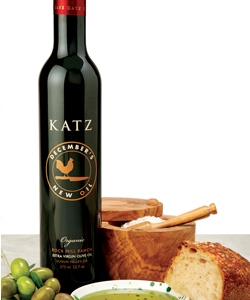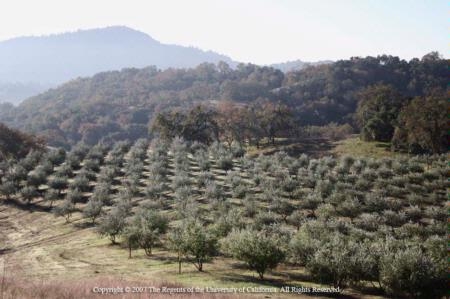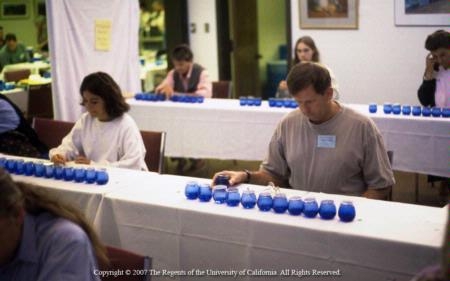Last call for olio nuovo
I’m slow on the artisan EVOO wave. In December, after proofreading the new issue of California Agriculture - Growing Bigger, Better: Artisan Olive Oil Comes of Age, I purchased a bottle for my partner and the next day heard a TV comedian joke about people buying $60 bottles of olive oil for holidays gifts. (Then I felt cheap — I hadn’t spent that much!)
But the tall thin black bottle of December’s New Oil from Katz and Company, near Napa, was so fabulous I decided to start learning the extra virgin olive oil (EVOO) lexicon. Did I know for sure whether it was grassy, buttery, peppery or pungent? It certainly was green. Albert Katz this week told me why: “That’s the chlorophyll in the oil; it’s at its height in olio nuovo,” he said.
When the earliest still-green olives are crushed in November, a strong odor of fresh green fills the mill, he explained. The crush smells like fresh artichoke, even parsley, but most predominantly like grass. Katz has been in the business so long that when he catches a whiff of mown grass he looks around to see whether someone is crushing olives nearby.
Darn it, though, Katz sells their olio nuovo only in December, so it’s over. The limited production and short window of sales for olio nuovo, celebrating the first crush, is a tradition in all the major olive-growing regions of the world, including northern Italy, where the name originates. The oil is always unfiltered, cloudy, and as bold as it’s ever going to be. Katz calls it “the pungency of youth.”
This week sees the very end of the season. McEvoy Ranch has bottles of their olio nuovo for sale at their San Francisco Ferry Building store and online through this weekend (February 6). The McEvoy olio nuovo is green, robust, and peppery — peppery means it has a little burn in the throat, which is a desirable quality. (Bitter is a different matter; it’s tasted on the tongue.) Like all olio nuovo, the McEvoy new oil has sediment in the bottom of the bottle, and it has an unctuous quality, a little pleasantly thick and earthy in the mouth.
With the end of the olio nuovo season comes the release of the oils that have been stored for two months; they are already changing — more mellow, more golden — and the sediment will stay in the storage tanks. As they age through spring and summer, they’ll taste more buttery.
Climate affects the taste of oil. “Terroir” is what the environmental factors are called, explain Paul Vossen and Alexandra Kicenik Devarenne in the California Agriculture article on sensory qualities of olive oils. Katz tastes some roundness and softness in his oil this year, from the cool summer and late harvest.
Different varieties of olive trees produce markedly different aroma compounds. Tuscan varieties, grown by both Katz and McEvoy Ranch, have robust aroma profiles (full-bodied, pungent, complex). A few stores down from McEvoy at the San Francisco Ferry Building, Stonehouse sells its milder EVOO, pressed from Spanish olive oil varieties Mission, Manzanillo, Sevillano, Ascolano and Arbequina. The Stonehouse oil isn’t spicy; it doesn’t burn the throat.
Last week, Katz released its main oils for 2011: Chef’s Pick Organic Extra Virgin and Rock Hill Ranch Extra Virgin. Rock Hill doesn’t taste like the olio nuovo, because a significant proportion of the olives in it are Taggiasca, and they weren’t harvested until after the olio nuovo was made. Chef’s Pick, though, has the same profile, Katz says. Now I know a little of the language, I think I’m going to investigate further and buy a bottle before it sells out. If I wait until summer, I’m told the green will be gone and the grassiness turned more herbal.
For more information on tasting olive oils, check out the UC Davis Olive Center; in August, they have introductory and advanced seminars on sensory evaluation of olive oil.
Paul Vossen is a UC Cooperative Extension farm advisor and expert on olive oil processing tasting; watch his video on tasting here.
Alexandra Kicenik Devarenne showed Sacramento Bee reporter Gina Kim in this video how to taste oil and recognize fustiness.
The California Olive Oil Council website lists farm tours and tasting rooms.
The Olive Oil Times has an archive of articles on tasting, including one on recognizing rancidity.



